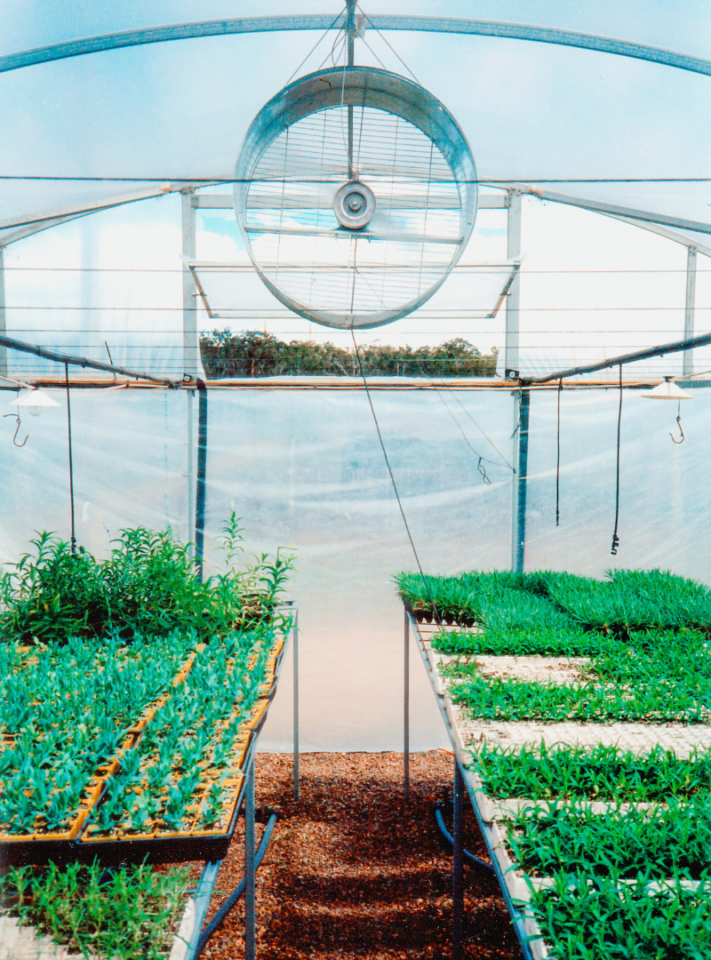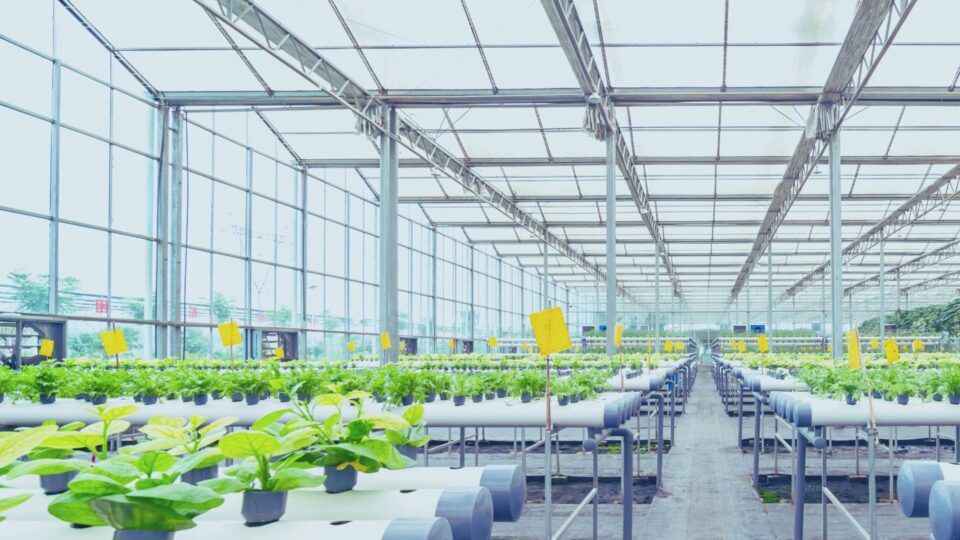Regulating temperature and humidity levels is vital to making your greenhouse’s environment conducive to higher crop yields for more profitability.
When managing a greenhouse for commercial operations, you must keep your greenhouse between 18 and 24 degrees Celsius to maximise profitability and operational efficiency. And you must keep the humidity between 40 and 80%.
Australian climates can reach up to 50 degrees Celsius – so how do you keep your greenhouse at the perfect temperature?
Keep reading as we explore why cooling your greenhouse is essential and the best methods for keeping it cool in summer.
Why should I keep my greenhouse cool in summer?
The summer can be a hot and steamy, particularly inside a greenhouse. Greenhouses are designed to amplify the outside temperature, providing the perfect warm conditions for the plants grown inside while preserving humidity levels.
Both your commercial operations and plants can suffer in your greenhouse during summer under the stress of such high temperatures. The heat can be ideal in winter, keeping your plants in perfect temperate conditions, but during the summer can make working conditions uncomfortable.
Heat affects the health of your plants by speeding up their reproductive processes, which can inhibit the production of seeds and fruits. For instance, tomatoes can suffer poor pollination and damage to immature fruits should temperatures rise above 32 degrees Celsius during the day and 24 degrees Celsius at night.
For workers’ safety, health, and the optimal growing temperature, you should implement cooling measures for your greenhouse during the summer.
How to keep your greenhouse cool
Ready to improve greenhouse conditions during summer? Here are the best methods.
Ventilation
Ventilation helps to promote air exchange, allowing cooler air from outside to mingle with the hot air in the greenhouse. An effective greenhouse ventilation system helps to remove excess heat and humidity. If you choose a side wall exhaust fan, the hot air from the greenhouse will be expelled. You can maintain consistent temperatures, no matter how hot the external conditions may become throughout the days and seasons.
Shade
Placing your greenhouse directly in the sun will result in an indoor temperature increase as the glass walls of the greenhouse trap the sun’s heat. You can solve this problem by covering your greenhouse with shade cloth or netting – it can help prevent overheating, and minimise temperature spikes by limiting direct sunlight exposure, thus maintaining the most suitable climate for plant growth.
Damping down
By spritzing your greenhouse floor with water, you can encourage a process called evaporative cooling. The water will evaporate, absorbing heat from the air for a cooling effect. The humidity levels will remain consistent while the temperature drops. This is the optimal solution to encourage healthy plant growth and higher crop yields.
Avoiding water stress
Heat stress and water stress can occur when the greenhouse crops do not have a sufficient supply or intake of water, leading to inhibited plant growth and even inventory loss. Therefore, it’s essential to have an effective watering and irrigation process within your greenhouse to ensure transpiration. When plants transpire, they absorb water through the root system, travelling up the plant. The plant will then release water vapour through their leaves for natural evaporative cooling, ensuring the plant’s health. By using commercial ventilation systems to aid in this evaporative cooling process, you can reduce the likelihood of water stress.
Benefits of greenhouse air circulation
By investing in air circulators, cooling, and extraction solutions, you can promote the following benefits for your greenhouse operations.

Temperature Regulation
A cooling ventilation solution – such as a mini mancooler – helps to push hot air out through the windows and door openings. It also reduces stagnant hot air pockets, ensuring the temperature is evenly distributed throughout the greenhouse for more reliable plant growth.
Regulating Humidity
Excessive humidity in a greenhouse is bad for a few reasons – it can attract pests and encourage the spread of diseases or mildew. The high humidity and lack of airflow in a greenhouse during summer can cause these things and deteriorate plant health. An extractor fan helps to remove humid air from the greenhouse and expel it into the surrounding environment.
Improving Pollination
Plants rely on a breeze or bees to pollinate each other and reproduce. Without this breeze, the pollen stays put, and the reproductive rate of your plants will decrease. In a greenhouse environment, this process must be performed mechanically. Ventilation and proper air circulation improve the reproductive rate, and plants will multiply more quickly.
Choose Fanquip for greenhouse cooling solutions
A greenhouse requires a delicate balance of humidity, temperatures, and air circulation. All of these issues can be solved with proper ventilation. While you can try shade, damping down your greenhouse, and avoiding water stress, ventilation is an all-around solution.
Fanquip is a leading provider of ventilation solutions, particularly in the agricultural industry. Contact us for assistance in planning your agricultural ventilation strategy.
